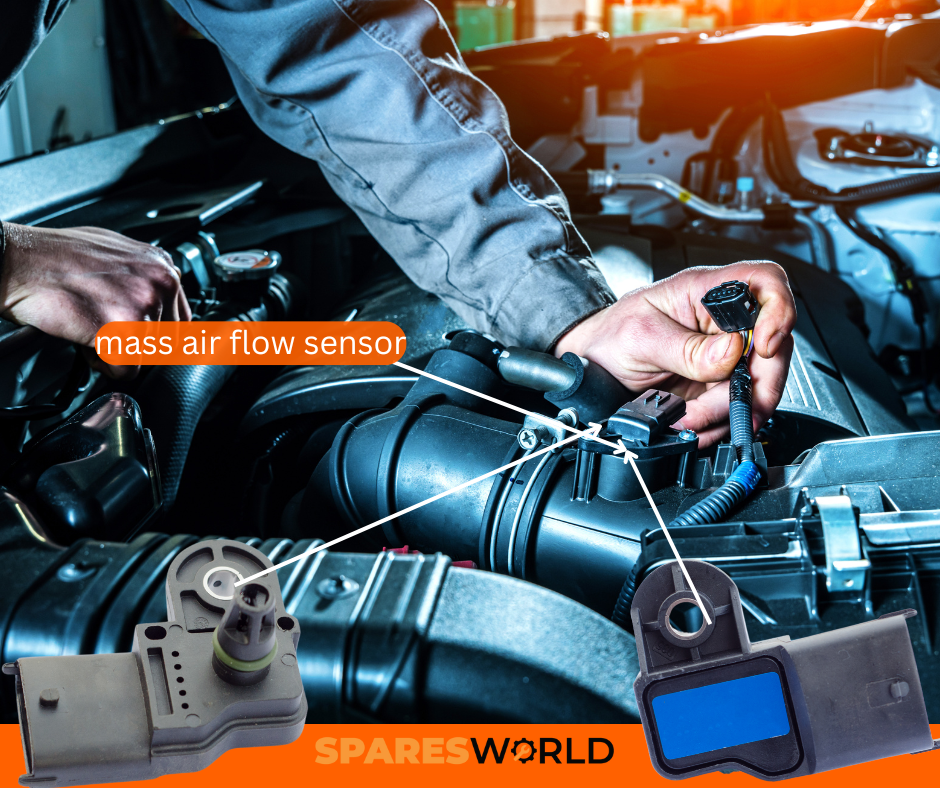The Importance of Regularly Cleaning Your Mass Airflow Sensor – Boost Your Car’s Performance with This Simple Step

Ever felt like your car just isn’t giving you the power or fuel efficiency it once did? Before you rush to the mechanic or start wondering if your car’s age is catching up, there might be a simple culprit: your mass airflow sensor (MAF). It’s easy to overlook this small, unassuming part, but a dirty MAF sensor could be robbing your car of its full potential without you even knowing it.
Buckle up, because we’re about to dive into how this tiny component plays a massive role in your car’s performance—and why giving it a good cleaning can save you both fuel and frustration.
What is the Mass Airflow Sensor and Why Should You Care?
The mass airflow sensor is like your car’s breathing coach. Its job is to measure the amount of air entering the engine and communicate that data to the engine’s control unit. This helps your car adjust the fuel-air mixture for optimal performance. Too much or too little air, and your engine won’t run as efficiently, leading to rough idling, sluggish acceleration, and even engine stalling.
But here’s the catch: over time, dirt, dust, and debris can coat the sensor, throwing off those crucial measurements. This dirty sensor sends incorrect information to the engine, causing your car to burn more fuel than necessary or run lean, which can damage engine components. And guess what? All of this happens behind the scenes, often without triggering any warning lights—until it’s too late.
Why Cleaning Your MAF Sensor is a Game-Changer
Think of your mass airflow sensor like the lungs of an athlete. If they can’t get enough clean air, they won’t perform at their best. A dirty MAF sensor is essentially a clogged filter for your car’s air intake, and it can lead to:
-
Decreased Fuel Efficiency: Your engine relies on precise data from the MAF sensor to adjust the fuel-to-air ratio. A dirty sensor sends bad info, causing your car to burn more fuel than needed.
-
Reduced Engine Power: When your car’s fuel mixture isn’t optimized, you’ll feel it in the sluggish response when you hit the gas pedal. It’s like trying to run with a blocked nose—your car just won’t have the same power.
-
Increased Emissions: An imbalanced fuel mixture can cause your engine to run inefficiently, which increases harmful emissions and puts a strain on your exhaust system.
-
Long-Term Engine Damage: Running your engine too rich or too lean can cause damage to internal components, leading to more expensive repairs down the line.
By keeping your MAF sensor clean, you ensure your car runs smoothly, maximizes fuel efficiency, and avoids those annoying engine hiccups.
Signs Your MAF Sensor Needs Attention
While it may not scream for attention like a flat tire or a dead battery, your mass airflow sensor does send out subtle hints when it’s dirty. Here are some of the key signs you should look out for:
-
Rough Idling: If your car feels like it’s struggling to keep running when you’re stopped, your MAF sensor could be dirty.
-
Poor Acceleration: Step on the gas, and nothing happens? A dirty sensor can make your engine feel sluggish and unresponsive.
-
Engine Stalling: When your engine doesn’t get the right fuel-to-air ratio, it can stall unexpectedly, leaving you in a tough spot.
-
Check Engine Light: In some cases, the check engine light will pop up if the sensor gets too dirty to function properly.
How to Clean Your Mass Airflow Sensor Like a Pro
The best part? You don’t need a mechanic to handle this. With the right tools, you can clean your MAF sensor at home in just a few minutes. Here’s a simple step-by-step guide to getting it done:
-
Turn Off the Engine: Safety first! Make sure your car is off and cooled down before you begin.
-
Locate the MAF Sensor: The MAF sensor is usually located near the air filter box, attached to the intake hose. Check your car’s manual for the exact location.
-
Disconnect the Sensor: Carefully unplug the sensor from the wiring harness. Make sure not to damage any of the connectors.
-
Use MAF Sensor Cleaner: Only use a cleaner specifically designed for MAF sensors. Other cleaners may leave residue or damage the delicate sensor.
-
Spray and Let Dry: Spray the cleaner on the sensor’s wires and components, making sure to remove all dirt and debris. Allow the sensor to air dry completely before reinstalling it.
-
Reinstall and Reconnect: Once it’s dry, reconnect the sensor to the wiring harness and reinstall it in its original location.
And just like that, you’ve restored your car’s breathing power!
Don’t Let a Dirty MAF Sensor Steal Your Car’s Performance
A clean mass airflow sensor can breathe new life into your car, giving you better fuel efficiency, smoother acceleration, and fewer trips to the mechanic. It’s an easy, cost-effective maintenance step that can prevent bigger issues from cropping up down the line.
So, the next time you’re doing routine maintenance or notice your car acting sluggish, remember to check that MAF sensor! And when you need the right cleaning products or any replacement parts, head to Sparesworld for the best advice and top-quality products.
Take care of the small things now, and your engine will thank you with better performance and fewer surprises on the road!

 Loading..
Loading..